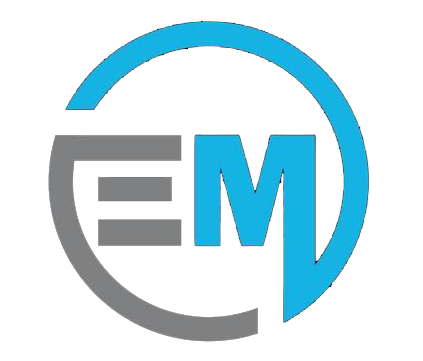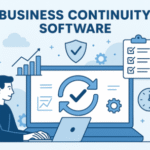The rapid evolution of online retail has made e-commerce software an essential tool for businesses looking to build, manage, and scale their digital storefronts. Whether you’re an entrepreneur launching a small boutique or a large enterprise expanding globally, choosing the right platform is crucial for success.
This guide highlights the best e-commerce software in 2024, their features, benefits, and how they cater to different business needs.
1. What is E-Commerce Software?
E-commerce software is a platform that enables businesses to sell products and services online. It integrates features such as website design, product catalog management, payment processing, order tracking, and marketing tools to create a seamless online shopping experience.
2. Why E-Commerce Software is Essential for Online Retailers
E-commerce software provides:
Ease of Use: Simplified tools for creating and managing online stores.
Scalability: Support for businesses growing from a few sales to thousands.
Customer Engagement: Tools for personalized marketing and customer service.
Security: Secure payment gateways and data protection features.
Global Reach: Multilingual and multi-currency support for international markets.
3. Key Features to Look for in E-Commerce Platforms
When evaluating e-commerce software, prioritize the following features:
User-Friendly Interface: Intuitive tools for store creation and management.
Mobile Optimization: Responsive designs for mobile shoppers.
Customizability: Options to tailor the storefront to your brand’s identity.
Payment Gateways: Support for multiple payment methods.
Integration: Compatibility with third-party apps for SEO, analytics, and marketing.
Inventory Management: Real-time tracking of stock levels.
4. Top E-Commerce Software in 2024
1. Shopify
Shopify is one of the most popular e-commerce platforms for its ease of use and extensive app ecosystem.
Best for: Small to medium-sized businesses and entrepreneurs.
Features: Drag-and-drop store builder, mobile optimization, and over 6,000 apps.
Pricing: Plans start at $29/month.
2. WooCommerce
WooCommerce is a free WordPress plugin that turns your website into an online store.
Best for: Businesses already using WordPress.
Features: Open-source flexibility, large plugin library, and scalability.
Pricing: Free; additional costs for hosting and extensions.
3. Magento (Adobe Commerce)
Magento offers robust features for large-scale e-commerce businesses.
Best for: Enterprises requiring custom solutions.
Features: Advanced customizations, AI-driven analytics, and multi-store management.
Pricing: Custom pricing for Adobe Commerce; free for Magento Open Source.
4. BigCommerce
BigCommerce provides a powerful and scalable platform for businesses of all sizes.
Best for: Businesses needing multi-channel sales integration.
Features: SEO-friendly, flexible APIs, and marketplace integrations.
Pricing: Plans start at $29.95/month.
5. Wix eCommerce
Wix combines simplicity with creative design flexibility.
Best for: Small businesses and beginners.
Features: Drag-and-drop builder, secure payments, and marketing tools.
Pricing: Plans start at $27/month.
6. Squarespace Commerce
Squarespace is known for its elegant templates and user-friendly interface.
Best for: Creative professionals and small retailers.
Features: Beautiful designs, built-in marketing tools, and mobile optimization.
Pricing: Starts at $23/month.
7. PrestaShop
PrestaShop is an open-source platform ideal for businesses with technical expertise.
Best for: Small to medium-sized businesses with in-house developers.
Features: Customizable, multilingual, and multi-currency support.
Pricing: Free; additional costs for hosting and modules.
8. OpenCart
OpenCart is a free, open-source e-commerce platform with extensive features.
Best for: Businesses with a focus on affordability and customization.
Features: Multi-store support, free extensions, and user-friendly admin panel.
Pricing: Free; optional costs for hosting and premium add-ons.
9. Salesforce Commerce Cloud
Salesforce Commerce Cloud offers AI-driven solutions for global e-commerce.
Best for: Enterprises aiming for a unified customer experience.
Features: AI personalization, omnichannel capabilities, and CRM integration.
Pricing: Custom pricing based on business needs.
10. Ecwid
Ecwid is a simple, affordable platform that integrates with existing websites.
Best for: Small businesses adding an online store to their current site.
Features: Multi-channel sales, social media integration, and mobile app.
Pricing: Free for basic plans; paid plans start at $15/month.
5. How to Choose the Right E-Commerce Software
Define Your Needs: Determine the features and scale required for your business.
Budget: Consider both upfront and ongoing costs.
Ease of Use: Look for platforms that fit your technical expertise.
Integration: Ensure compatibility with payment gateways, shipping services, and marketing tools.
Support: Opt for platforms with reliable customer support and community resources.
6. Future Trends in E-Commerce Software
AI and Machine Learning: Enhanced personalization and predictive analytics.
Augmented Reality (AR): Virtual try-ons for products like clothing and furniture.
Voice Commerce: Shopping through voice-activated assistants.
Sustainability Features: Tools to promote eco-friendly practices.
Global Commerce: Advanced multi-language and multi-currency support.
Conclusion
E-commerce software is the backbone of online retail success. Platforms like Shopify, WooCommerce, and Magento cater to various business needs, ensuring scalability, customization, and a seamless customer experience. As e-commerce continues to evolve, choosing the right software will be critical to staying competitive in the digital marketplace.



